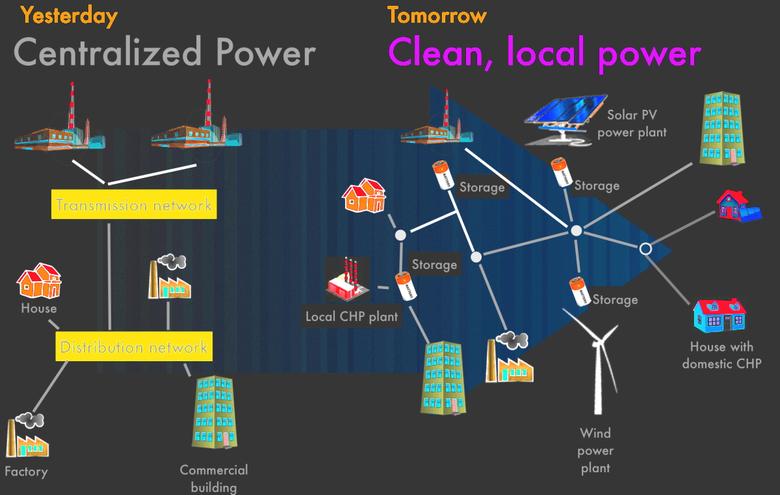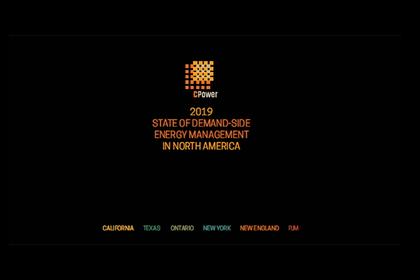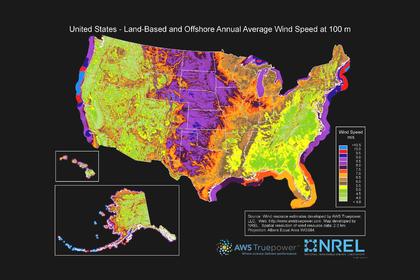
DISRUPTIVE ENERGY TECHNOLOGY

ENERGYCENTRAL - Disruptive Technology in a Regulated Market: Will Utilities Suffer the Uber Effect?
The decentralization of our electricity grid is inevitable. Distributed energy resources (DERs) are becoming increasingly attractive for consumers as prices continue to drop and political and environmental pressures continue to mount. However, this presents a growing challenge for the existing electrical infrastructure, and it appears that many are not recognizing the potential scale of this shift. Utilities are facing an existential crisis, but are utilities and regulators ready for a disruptive technology and subsequent business model shift?
This paradigm of an established monopoly being forced to contend with a revolutionary incumbent technology, is one we have seen before. Telecom is often cited as a regulated market that has been transformed, but there is another example of monopoly in a regulated market which was fundamentally altered by the emergence of new technology. Only a few years ago, the ridesharing companies Uber and Lyft entered the New York market and began competing with traditional taxis, wiping out billions in value from the incumbent operators. Should the utilities and the regulators fail to prepare for a similar type of disruption from DERs, it could be disastrous for the future of the grid.
Historically, the majority of power generation has only been feasible through large scale projects: nuclear plants, coal plants, natural gas plants, hydroelectric dams, and so on. However, we are rapidly approaching a world where the average homeowner, or community can install a few solar panels, or a small windmill, attach a storage system and generate their own clean power alongside a tidy profit. Technology will only evolve to offer more generation and storage options, and the cost of these systems will continue to fall. Utilities and regulators are facing a future where those who were previously customers are now capable of generating electricity for themselves and others on a massive scale.
This paradigm has played out before. Before 2014 the New York taxi industry was thriving; medallions had sold for over $1.2 million and were performing around 500,000 trips every day(1)(2). However, around 2014 ridesharing companies Uber and Lyft entered the market, and over the next 5 years proceeded to decimate the taxi business.
Over that period, medallion prices fell from over $1,000,000 to under $200,000, and daily usage fell 60% to 200,000 daily rides. Where previously only certified operators could offer taxi services, suddenly anyone with a car could become a taxi driver in a fleet that was more efficient and better priced.
The effect of ridesharing on taxis and their regulation could be reflective of the future explosion of DERs as part of the electrical infrastructure. Suddenly the emergence of new technologies causes a monopoly to go from the only one capable of providing a service, to a world where anyone can offer that service themselves. For taxis, rideshare apps meant that anyone with a car could now functionally operate a taxi business, and for utilities, future distributed energy technology will mean that anyone who owns their own home could generate and meet their own electrical demands.
Driving a car is a very different from operating grid resources, but the entrance of ridesharing services into the New York market paints a grim portrait of the potential effects of incumbent technologies on monopolies. Nevertheless, there is still time for utilities and regulators to adapt and enable new technologies for customers rather than to prohibit them, which has proven to be damaging in the long run, and they have certainly began making steps in the right direction.
Utilities and regulators are critical to the future of the grid, as are new customer-sided resources and management of them. In a word, integration will be key. Fundamentally no matter where electrical power is originated, the infrastructure will need to be maintained and its use regulated. This will be a measured and deliberate process, but the scale of this challenge needs to be acknowledged, and steps need to be taken to ensure the future of our grid and to avoid any disruptive shocks to the system.
- https://www.nytimes.com/2019/05/19/nyregion/nyc-taxis-medallions-suicides.html
- https://toddwschneider.com/posts/taxi-uber-lyft-usage-new-york-city/
---
This thought leadership article was originally shared with Energy Central's Utility Management Community Group. The communities are a place where professionals in the power industry can share, learn and connect in a collaborative environment. Join the Utility Management Community today and learn from others who work in the industry.
-----
Earlier:

















